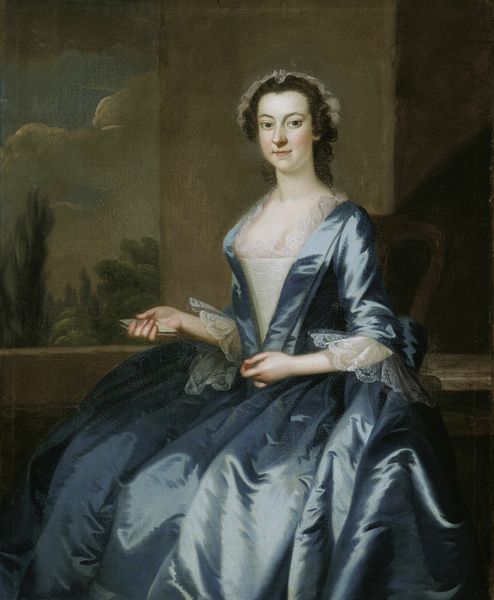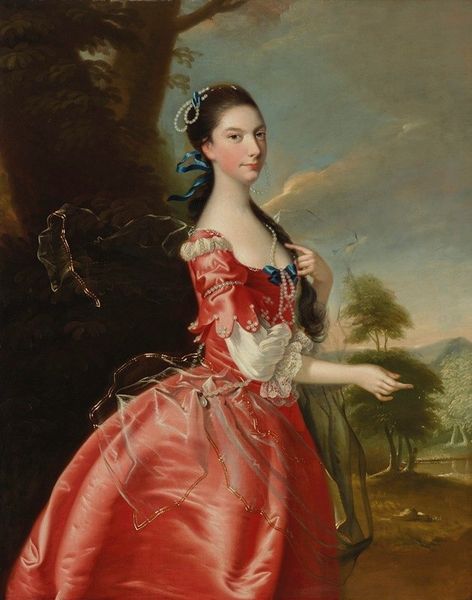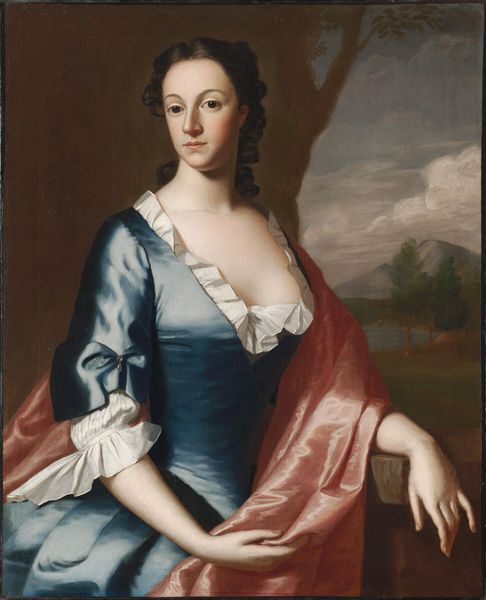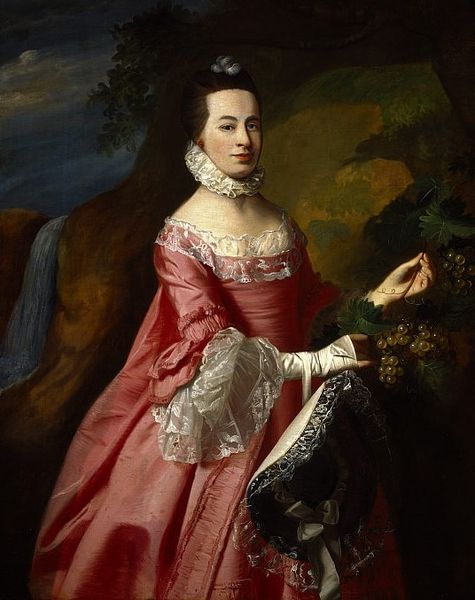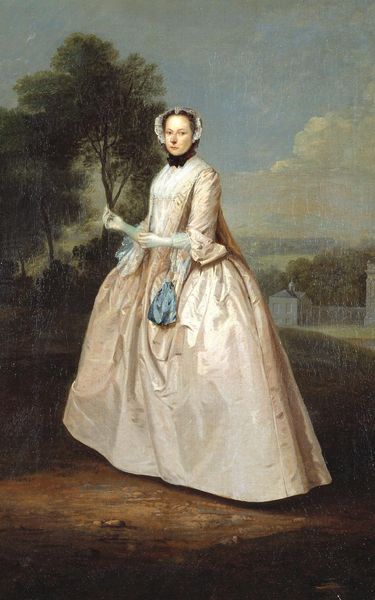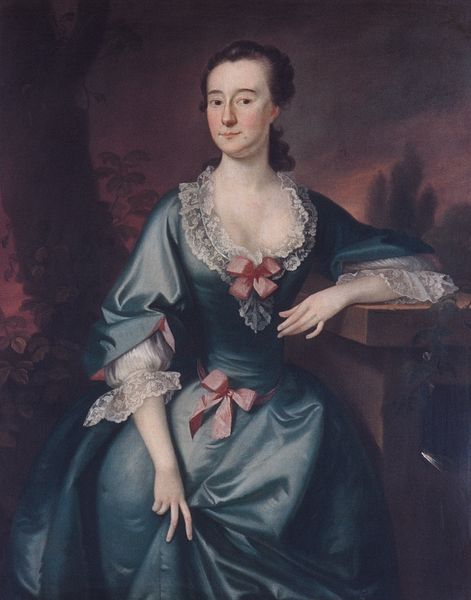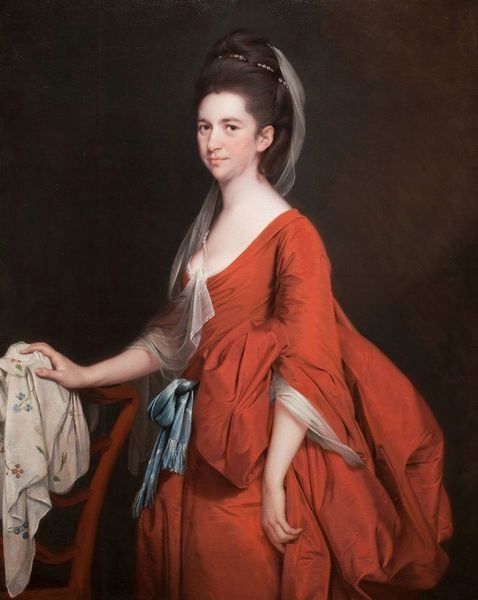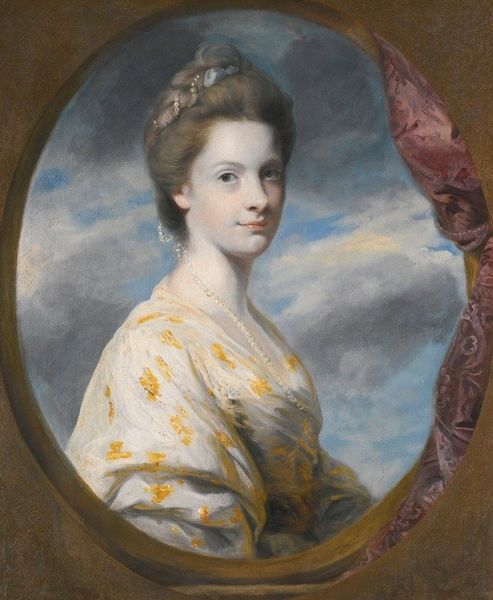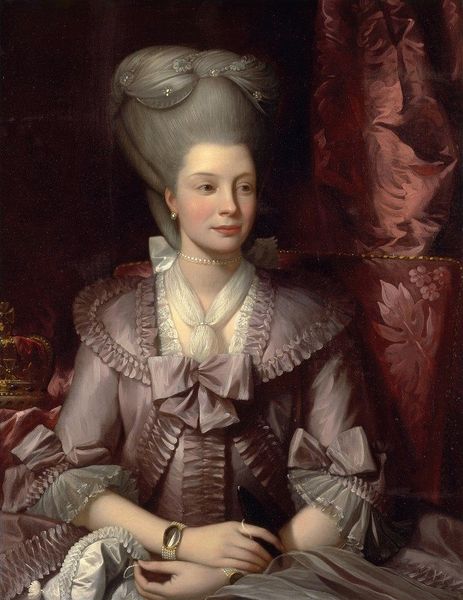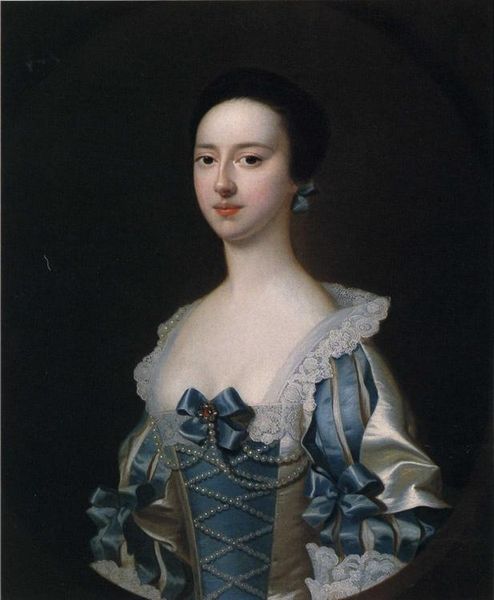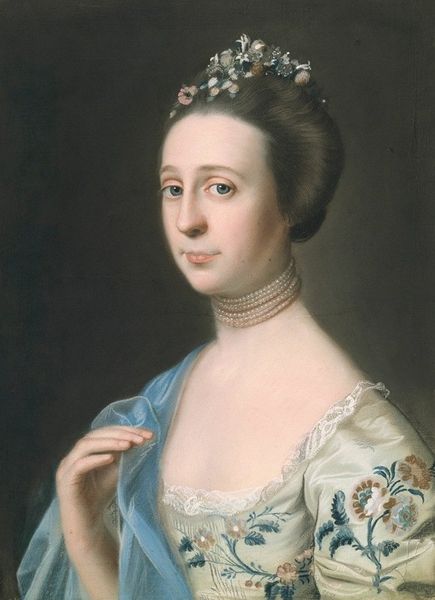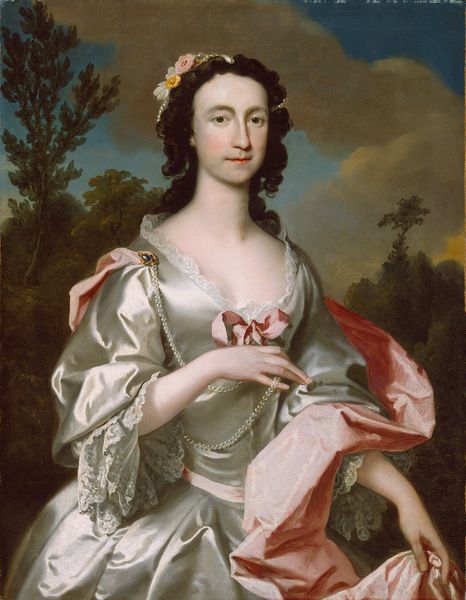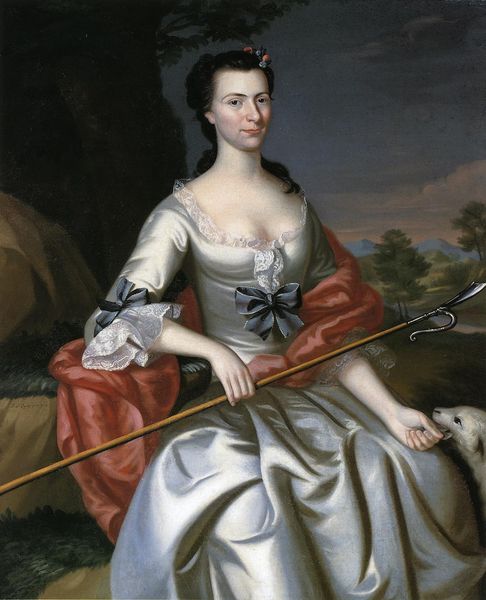
painting, oil-paint
#
portrait
#
figurative
#
painting
#
oil-paint
#
figuration
#
history-painting
#
academic-art
#
rococo
Copyright: Public Domain: Artvee
Curator: Here we have "Miss Elizabeth Ingram," an oil on canvas creation attributed to Joshua Reynolds. Editor: The striking azure of the gown immediately pulls you in. It's luminous and almost looks unreal against the somewhat stormy background. There’s a subtle melancholy to it. Curator: Reynolds, a leading portrait painter in 18th-century Britain, aimed to elevate portraiture to the level of history painting. The pose and setting—the classical column, the garden—are meant to evoke grandeur and allude to the sitter's status, framing Miss Ingram in the context of classicism. Editor: But who was Miss Ingram really? Wealth and social position obviously dictated such a portrait, a way to negotiate her existence within the male gaze of that era, immortalizing beauty as a valuable currency. Do you see the gaze as direct and assertive or something more vulnerable? Curator: It's certainly complex. The painting reflects both the subject’s personal identity and the social roles expected of women. Her gaze projects confidence but also perhaps a trace of reserve. The artifice of the pose and the formal setting would contribute to how her status was constructed. Reynolds also sought to flatter his sitters while fulfilling certain classical ideals and conventions of beauty. Editor: Right. The Rococo style is interesting too—the elegance and decoration masking rigid societal constraints, like the whalebone under that extravagant dress restricting her movement. I think understanding the period is pivotal. There is beauty, yes, but also a quiet statement about power, class, and even oppression when contextualized. Curator: The politics of imagery. Indeed, Reynolds, through paintings such as this one, played an active role in shaping how people of status were viewed, further reinforcing a societal order and shaping its narrative. The artwork then serves as a lens through which to understand 18th-century British culture, including the societal constructs around gender and status. Editor: Well, on first encountering “Miss Elizabeth Ingram,” you might simply note its beauty, but understanding it socially allows one to ask critical questions. Hopefully, we inspire conversations beyond the aesthetics. Curator: I hope so too, I feel understanding this artwork gives us the framework to do so and that it resonates within.
Comments
No comments
Be the first to comment and join the conversation on the ultimate creative platform.
